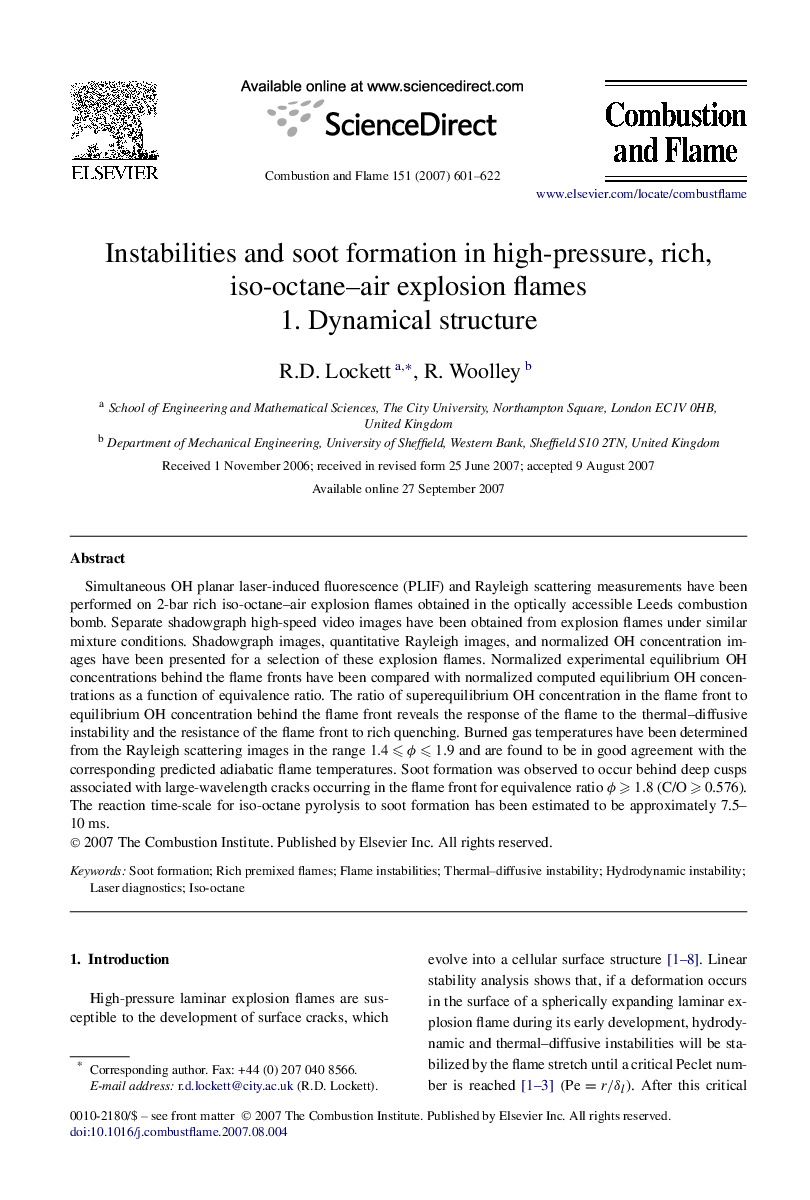| Article ID | Journal | Published Year | Pages | File Type |
|---|---|---|---|---|
| 170052 | Combustion and Flame | 2007 | 22 Pages |
Simultaneous OH planar laser-induced fluorescence (PLIF) and Rayleigh scattering measurements have been performed on 2-bar rich iso-octane–air explosion flames obtained in the optically accessible Leeds combustion bomb. Separate shadowgraph high-speed video images have been obtained from explosion flames under similar mixture conditions. Shadowgraph images, quantitative Rayleigh images, and normalized OH concentration images have been presented for a selection of these explosion flames. Normalized experimental equilibrium OH concentrations behind the flame fronts have been compared with normalized computed equilibrium OH concentrations as a function of equivalence ratio. The ratio of superequilibrium OH concentration in the flame front to equilibrium OH concentration behind the flame front reveals the response of the flame to the thermal–diffusive instability and the resistance of the flame front to rich quenching. Burned gas temperatures have been determined from the Rayleigh scattering images in the range 1.4⩽ϕ⩽1.91.4⩽ϕ⩽1.9 and are found to be in good agreement with the corresponding predicted adiabatic flame temperatures. Soot formation was observed to occur behind deep cusps associated with large-wavelength cracks occurring in the flame front for equivalence ratio ϕ⩾1.8ϕ⩾1.8 (C/O⩾0.576C/O⩾0.576). The reaction time-scale for iso-octane pyrolysis to soot formation has been estimated to be approximately 7.5–10 ms.
